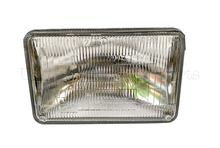adamchandler
YouTube Mechanic
2018 GSA, 3 years using a lithium ion battery. I changed nothing except replaced my rear shock with a new one and 2 days later the battery is dead. Step one, I just ordered a new battery. That usually solves most of these issues. 2 days later (after a week of daily riding), the GS is dead again.
So I’ve purchased a multimeter.
I’m getting 1.5 amps of draw on the battery with the leads touching the negative terminal and negative cable. Am I doing this right? I removed all of the accessories from the positive and negative terminals of the bike so now it’s just the negative lead of the bike and the multimeter and I’m still seeing the same 1.5 amps.
So if 1.5 amps is a battery killer according to the internet and all of the accessories are disconnected, what’s my next step for troubleshooting?
So I’ve purchased a multimeter.
I’m getting 1.5 amps of draw on the battery with the leads touching the negative terminal and negative cable. Am I doing this right? I removed all of the accessories from the positive and negative terminals of the bike so now it’s just the negative lead of the bike and the multimeter and I’m still seeing the same 1.5 amps.
So if 1.5 amps is a battery killer according to the internet and all of the accessories are disconnected, what’s my next step for troubleshooting?



